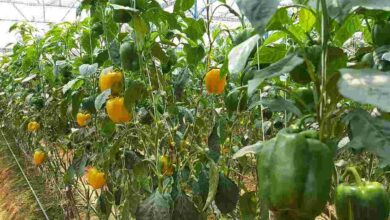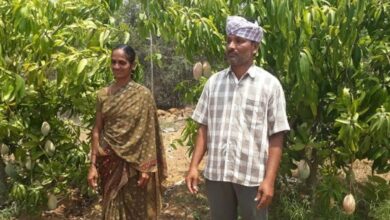Success Story: This man from Assam quit his job to build an aquaculture empire worth Rs 3 crore, know how he achieved such a great feat
Success Story: Born in Gohpur, Biswanath Chariali, Assam, Anup Kumar Sarmah finished his degree work at Guwahati University in 2002. He worked as a research assistant at CSIR-North East Institute of Science & Technology (previously the Regional Research Laboratory) for five years before starting his career. After that, he spent more than 15 years working for an NGO, where he gained priceless knowledge and expertise in other states and even abroad.

As his work developed, Anup saw how important independence was, particularly in the agricultural sector of his own country. Motivated by this idea, he made the decision to establish aquaculture on a meager 10-acre plot of land. His company has now grown to be a 100-acre operation that specializes in raising carp and valuable fish species, including Koi, Magur, and Catfish.
Anup not only raises fish but also operates productive fish seed (spawn) production facilities that produce more than one crore fish seeds a year. His seeds are dispersed across over ten Indian states, making a substantial contribution to the expansion and sustainability of the aquaculture sector.
Changing the Fish Supply Chain in Assam
Historically, Assam has relied on regions like Andhra Pradesh for its fish supplies since it receives a lot of rainfall and floods for more than half the year. But because of Anup’s efforts, this reliance has been inverted, and Assam is now a supplier of fish seeds to other states rather than a consumer.
He has tackled the high cost of fish feed, which is one of the main issues in aquaculture, in addition to fish output. He started his own feed production company, producing 200 tons of fish feed a year, after realizing that commercial fish feed is among the most costly parts of the business. This has benefitted other fish growers in the area in addition to lowering operating expenses for his own business.
Instruction and Transfer of Knowledge
Anup’s company focuses on uplifting people in addition to making money. Through both free and paid training programs, he actively instructs and guides prospective fish farmers. His objective is to provide more people with the abilities and information needed to be successful in aquaculture.
He has educated more than 2,000 people in fish farming so far, including more than 300 farmers who received free training only last month. From fundamental fish farming methods to sophisticated spawn generation and feed management, his training sessions cover it all.
Closing the Knowledge Gap: From Lab to Land
Anup, who was a scientist at a CSIR lab, is a big supporter of the “Lab to Land” idea, which holds that farmers should directly profit from scientific research. He, however, points out that there is still a big information transfer gap between agricultural practitioners and research institutes.
He was further inspired to enter the aquaculture industry by the mismatch between fish production and demand caused by Assam’s lack of knowledge and access to technology. By providing farmers with access to scientific methods, his project is assisting in closing this gap.
From a Low Pay to a Rs 3 Crore Profit
Many people accept steady employment with little pay, but agribusiness owners like Anup are altering the course of history. He decided to go back to his own country and create something significant after working all around India and outside.
He now produces 100 tons (1 lakh kg) of fish yearly, and he also produces Rs 1 crore worth of fish seeds. His company already generates an astounding Rs 3 crore in revenue, demonstrating the enormous potential of Assamese fish farming.
Obstacles Encountered
Anup encountered a number of obstacles while starting his aquaculture company, despite his success:
The gap between supply and demand
For a long time, Assam has been dependent on other states for its fish supplies. By ensuring year-round local manufacturing, Anup’s business lessens reliance on outside suppliers.
Insufficient Knowledge of Technology
One of the biggest obstacles facing new growers was their limited access to contemporary fish-growing methods. But to help with knowledge transmission, agricultural organizations like KVKs and SAUs have taken over. Government programs eventually offered vital help in technological transfer and training, despite the initial lack of support.
Expensive Feed
One of the largest costs in aquaculture is fish feed. In order to address this, Anup established his own feed manufacturing facility, which decreased expenses for both him and other farmers.
Young People Must Be Agriculture’s Future Face
According to Anup, “food security is the need of the hour.” Since older generations may not be able to satisfy the needs of modern agriculture, he thinks that young people need to be actively involved in the agricultural business. Instead of settling for low-paying occupations, he encourages young professionals to invest their knowledge and abilities in agriculture, where there are many government subsidies and incentives available.
Anup is always ready to provide instruction and assistance to anybody who wants to study aquaculture in order to help them succeed.
The unrealized potential of aquaculture in Assam is shown by Anup Kumar Sarmah’s transformation from a scientist to a successful agribusinessman. In addition to changing his own life, his commitment, creativity, and business sense have opened doors for thousands of other farmers.
Anup has set a great example for future generations by providing reasonably priced fish feed, lowering Assam’s dependency on outside fish suppliers, and educating ambitious businesspeople. His experience serves as evidence that agriculture may be a very lucrative endeavor if it is tackled with the appropriate attitude and understanding.
Anup’s goal of a fish-producing Assam that is self-sufficient seems to be within reach as he grows his company and trains more people. His accomplishments serve as a potent reminder that even in the most unusual sectors, creativity and perseverance can produce remarkable results.





